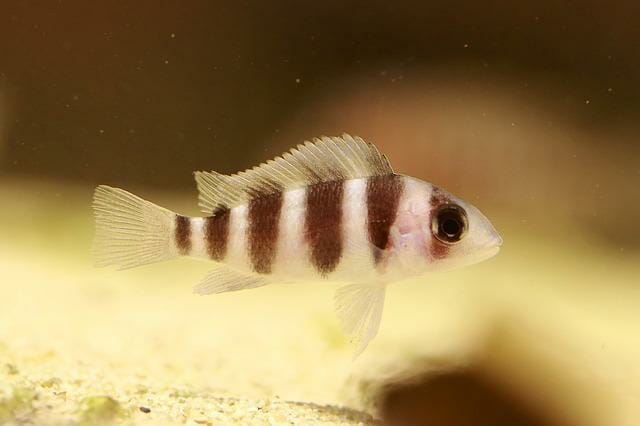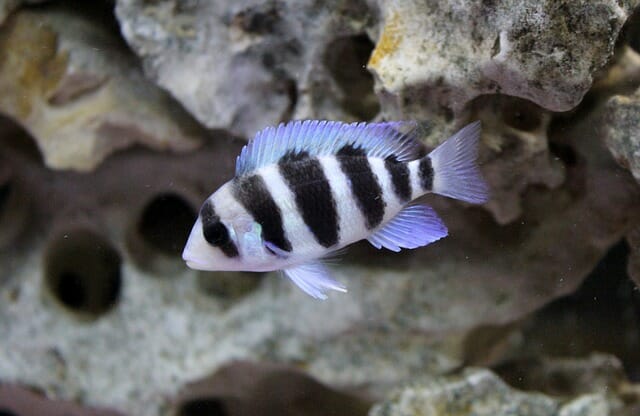When to Remove Convict Cichlid Fry: Main Reasons and Proper Care

The convict cichlid is a brightly-colored fish that is popular among fish enthusiasts. This fish is known for its ability to thrive in various conditions, making it a versatile fish for both the beginner and the experienced aquarist.
Convict cichlids are very active fish, and as such, they need their fry to be removed from the tank regularly to prevent them from getting lost or eaten. When it’s time to remove the fry, it’s essential to do so quickly and without disturbing the adults, as they will likely start hunting down the fry if they’re disturbed.
Table of Contents
Why Do You Need to Separate Convict Cichlid Fry Immediately?
Parents Might Eat Their Fry
One of the biggest dangers to fry when keeping convict cichlids is that their parents might eat them. This can happen if the adults are hungry and detect food nearby, even if it’s just a few fries. So it’s essential to remove any fry from your tank as soon as they hatch to have a chance at survival. In addition, when you remove the fry, be sure to take into account the total number of fish that are present in your tank.
Different Parent Maturity
The maturity level of cichlid fish determines how they will provide care for their young. Generally, fish that are older and have completed their juvenile stage tend to be more attentive parents than those still growing or in their larval stage. In addition, different cichlid species have different life cycles, and some fish will be more focused than others when they reach a particular set of their development. Therefore, when choosing the perfect convict cichlid for your home aquarium environment, this is something to keep in mind.
Stressed Cichlid Parents
Stressed-out parents that are not getting the care they need can eat their young. This is especially true if the fry is abandoned and left to fend for themselves in an aquarium with inadequate food or water. It’s essential to provide adequate nutrition and clean water so that your cichlid parents don’t have to worry about this. Still, it is also necessary to keep a close eye on them if any fry does manage to elude them and find themselves in an aquarium with less than optimal conditions.
How to Care for Cichlid Fry?
Providing adequate food and water and regular cleaning is the key to the successful care of a fry. In addition, it’s crucial to provide a stable breeding environment by keeping at least one male and one or more females in an aquarium.
Purchase a 5-Gallon Tank
When rearing fry, keep in mind that a 5-gallon tank is required minimum size. At least one male and one or more females are necessary to create a stable breeding environment, so do not buy an aquarium without them. In addition, make sure that you have an aquarium hood that will accommodate at least three inches of the substrate to not overwhelm their systems with too much nutrition or water growth, causing algae problems.
Aquarium Set-Up
Set up the tank before adding your fry. Fill it with fresh water and add a few drops of fish food to begin preparing it for fry rearing. Place the aquarium filter on and plug in the power cord. In addition, place the gravel, heater, and cover on the tank.
Heat the Water Source
Ideally, the water source should be between 70–77 °F (21–25 °C). If it is more relaxed than this, you can use a heater to warm it up gradually. Do not exceed 78 F or 24 C as the fry needs 72-76 degrees Fahrenheit temperatures for optimum development and survival. In addition, if using an aquarium thermostat that shuts down your heater during cold weather, expect them to die more frequently when it’s cold outside.
Safety Transfer
When the fry is large enough to be handled, it’s time to transfer them from the egg container or cooking vessel into your new tank. Be sure to use a net, bucket, or container with a slightly larger lid than the original container’s opening so you can securely dump in all of them at once. Leaving fish and water out of an aquarium is not recommended, impairing their survival and growth. In addition, the breeder’s waste (eggshell remains) can contaminate your tank, so a net is better to use.
Healthy Diet
Feeding your convict cichlid fry a high-quality protein-rich food will help them grow into healthy adults. Try Krill, sinking catfish pellets, or feminized trout feed. Avoid feeds such as flakes and freeze-dried foods as they are low in nutritional value for these fish. In addition, avoid adding any medicines or additives to the food, especially medications containing copper, as they can accumulate in the fish tissues and kill them.
Transfer Fry to the Main Tank
When the fry is large enough to handle, carefully transfer them into the main tank. Be sure to use a net and drop them in one at a time so they can all swim freely. Use fresh water from your main tank to rinse any food and substrate off of their new home before adding it. In addition, since the fry may swallow part of their gravel, you can use a toothbrush to scrub any remaining pieces out.
